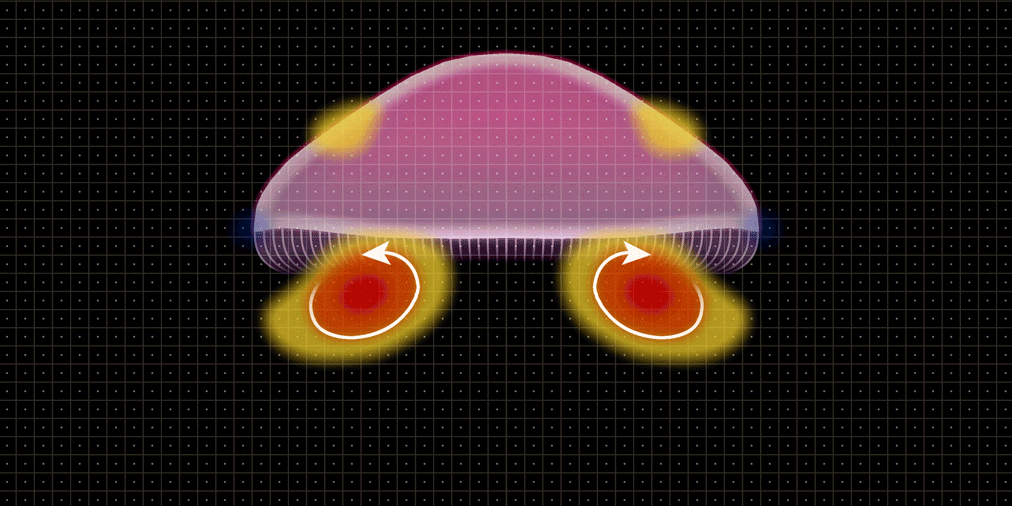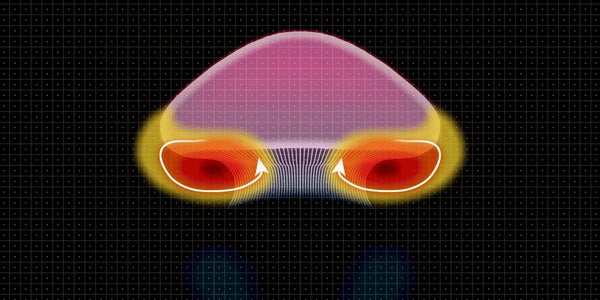This article was published in Scientific American’s former blog network and reflects the views of the author, not necessarily those of Scientific American

Animation by Eleanor Lutz
For an article in the May issue of Scientific American, Eleanor Lutz—with input from Bradford J. Gemmell, a marine biologist at the University of South Florida—developed a series of illustrations that demonstrate how jellyfish manipulate water pressure to alternately pull and push themselves through water.
If you're familiar with Lutz's captivating animated GIFS, you'll see why I couldn't resist asking her to create an animated jellyfish as well. In the static print version, the focus is on water pressure. In this motion version, Lutz represents water flow direction and speed. As the jellyfish flexes and contracts its muscles, a donut of spinning water—called a vortex—rolls downwards then up under the bell edge. This view shows a cross section of that vortex ring as it rolls down over a stylized Aurelia aurita moon jelly (pink). The red zones represent the fast spinning core of the slower-spinning primary vortex (yellow). A secondary, weaker vortex (blue) spins off in the opposite direction. Above the bell, the yellow vortex contributes to a relatively weak pressure zone, pulling the critter forward. Once under the bell, the residual faster-moving core acts like a paddle wheel, pushing a water jet in between them and up underneath the jelly, providing an extra boost.
On supporting science journalism
If you're enjoying this article, consider supporting our award-winning journalism by subscribing. By purchasing a subscription you are helping to ensure the future of impactful stories about the discoveries and ideas shaping our world today.
For technical details on jellyfish biomechanics, see "Exploring vortex enhancement and manipulation mechanisms in jellyfish that contributes to energetically efficient propulsion" by B. J. Gemmell, J. H. Costello and S. P. Colin, and "Suction-based propulsion as a basis for efficient animal swimming," by B.J. Gemmell, S. P. Colin, J. H. Costello and J. O. Dabiri.
Interested in more jellyfish imagery? Check out the mesmerizing video in Jennifer Frazer's post on a recently discovered deep sea jelly, throught to belong to the genus Crossota.
